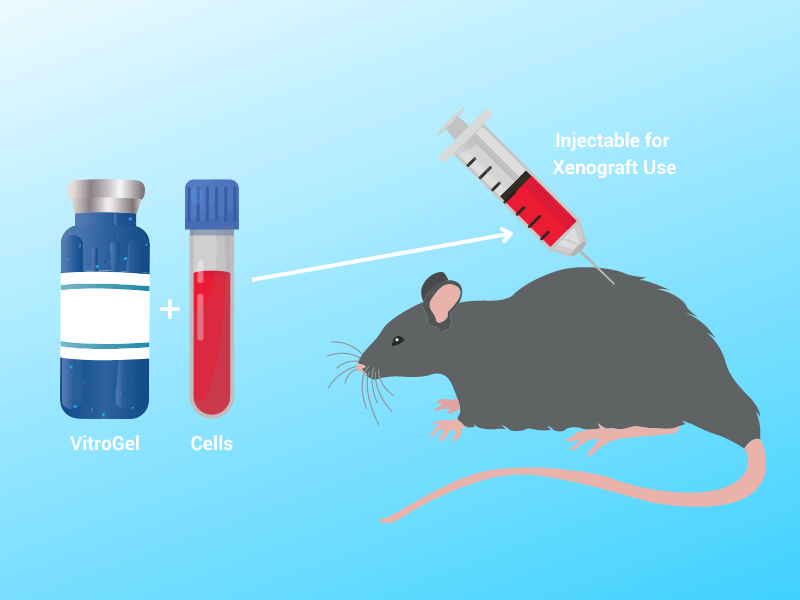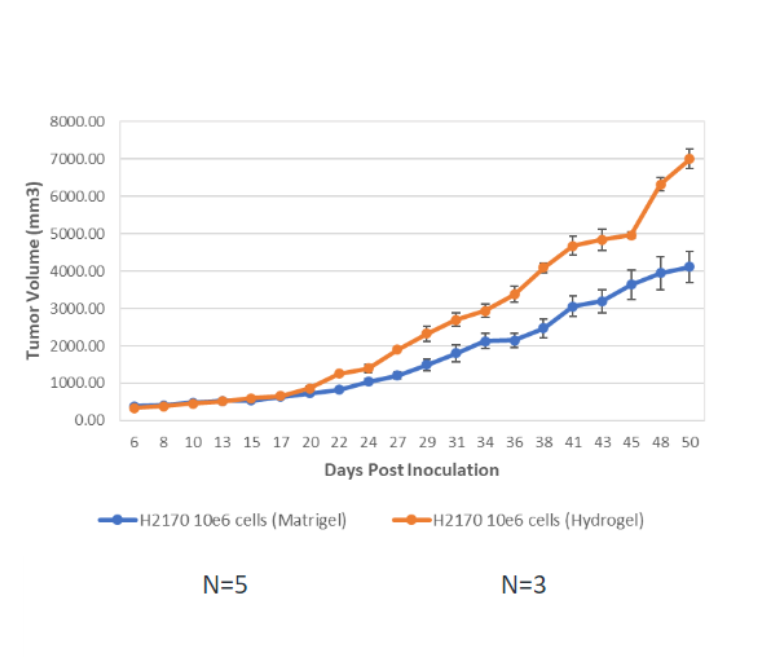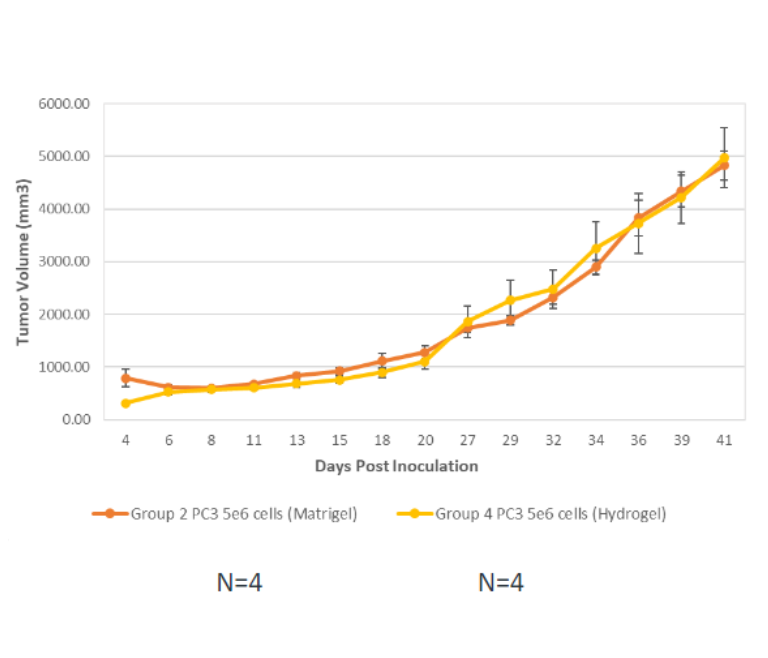Matrigel is an important component for a wide variety of cancer xenograft studies. Recently, however, sourcing issues have led to backorders lasting up to 6 months. In order to continue studies, researchers may need an alternative. Based on recent cell line data, a hydrogel called VitroGel seems to be an excellent substitute for use in xenograft research.

Figure 1: Because of its unique rheological properties, VitroGel can maintain injectable status for hours after mixing.
VitroGel® Hydrogel Matrix
VitroGel® Hydrogel Matrix is a ready-to-use, xeno-free hydrogel for cell culture research. VitroGel is an optimized formulation of multi-functional ligands to support a variety of cell types for different applications.
The hydrogel system is translucent, permeable, and compatible with a variety of imaging technologies. By combining the solution with the cell culture medium, the solution quickly becomes a hydrogel matrix. VitroGel can also be formulated as an injectable for in vivo studies. More details can be found here.
Watch an introduction below.
VitroGel® Hydrogel Matrix vs. MatriGel
In this study we compared the commonly used Matrigel with VitroGel Hydrogel Matrix in H2170 lung cancer cell line and PC3 prostate cancer cell line. Both of these were performed in SRG rats, as well as additional mouse models. The image below represents the data generated showing the VitroGel Hydrogel Matrix performing as well as Matrigel in mean tumor volume with Hera’s SRG rats.
We believe this synthetic process provides less lot-to-lot variability in combination with Hera BioLabs’ SRG Rat, a highly immunodeficient rat model for Xenograft studies.

Figure 2a. Vitrogel vs. Matrigel tumor growth in the H2170 lung cancer cell line

Figure 2b. Vitrogel vs. Matrigel Tumor growth in the PC3 prostate cancer cell line
Xenograft Studies and Hera’s SRG Rat
Overcome the limitations of smaller mouse models and enable larger tumor growth with Hera BioLabs’ SRG Rat model. With our state-of-the-art facility, Hera can perform your in vivo efficacy tumor xenograft in your preferred mouse model or our proprietary SRG OncoRat®.
Find out more about the SRG rat / OncoRat, our gene editing technology, and our full suite of CRO services by contacting us today.
